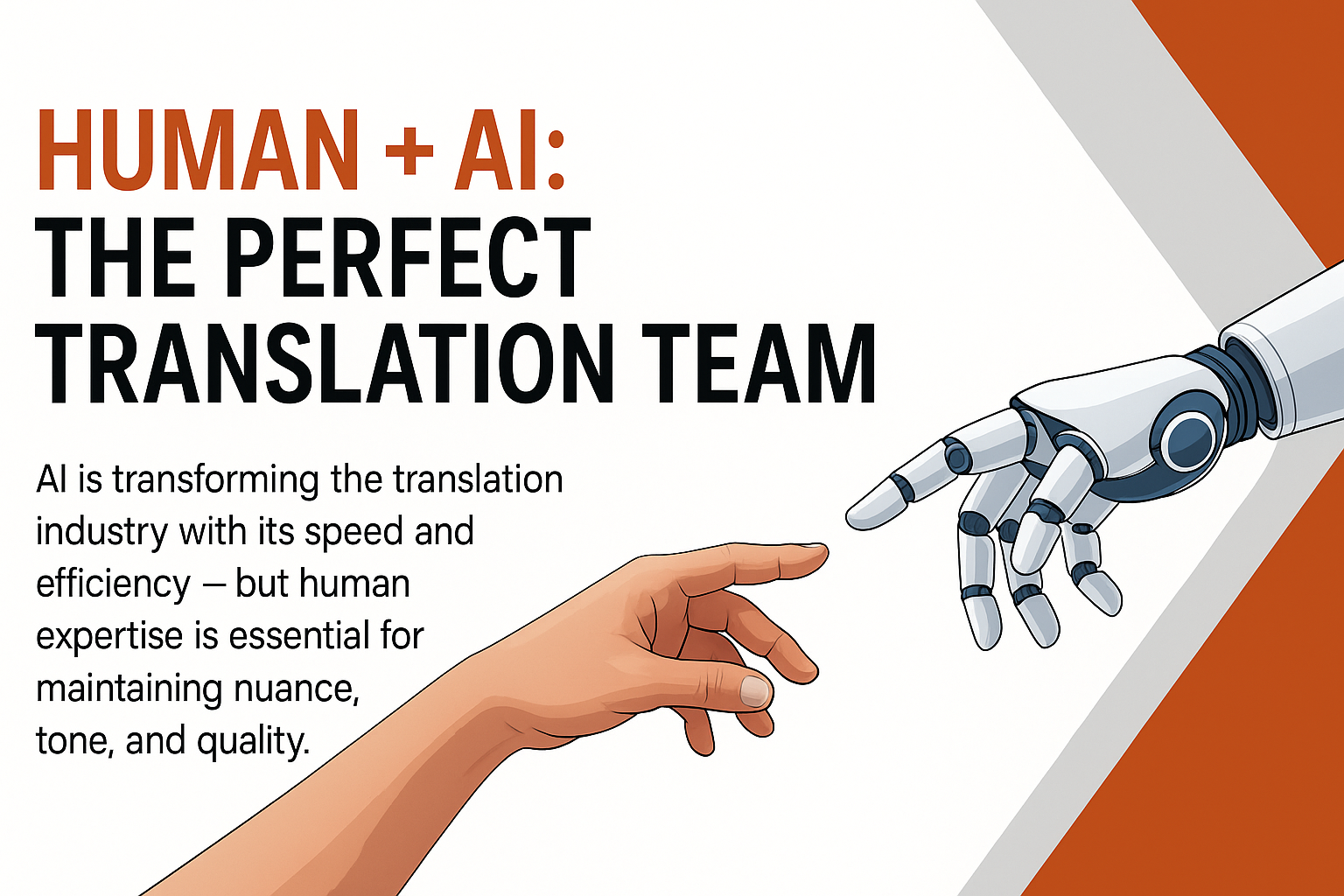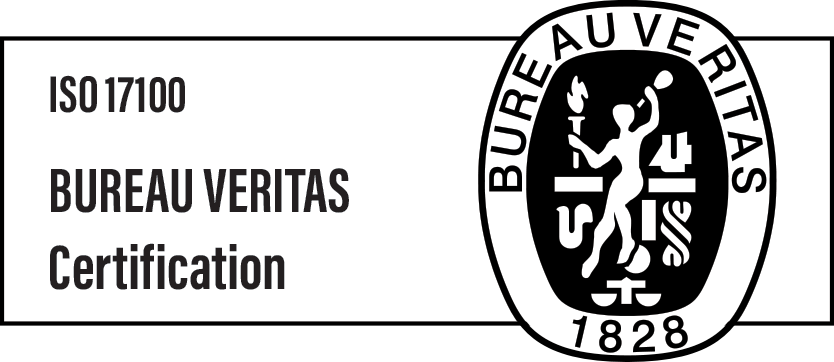Human + AI: the perfect translation team

Why human + AI is the future of translation
In an increasingly interconnected world, the demand for fast, accurate and culturally attuned translation has never been greater. Businesses striving to reach global audiences must now navigate the complexities of language, tone and context across a multitude of platforms and formats. Enters AI: a transformative force that’s reshaping the translation industry with its unmatched speed, scalability and efficiency.
But while AI brings tremendous advantages, it cannot fully grasp the subtlety of human expression. Machines may translate words, but they often miss the meaning behind them. This is where the irreplaceable value of human linguists shines through.
At Aploq, the philosophy is clear: AI is a tool, not a replacement. True quality in translation comes from the collaboration between intelligent algorithms and skilled professionals. AI accelerates the workflow by generating initial drafts and handling high-volume, low-risk content. Then, human experts step in to refine the output – ensuring accuracy, preserving tone, honoring cultural nuance and tailoring content to specific audiences.
This hybrid approach not only delivers content that reads naturally but also ensures brand integrity and communicative clarity across languages. It’s not man versus machine – it’s man and machine, working together.
The role of AI in translation: speed, scale and consistency
AI has emerged as a transformative force in the translation industry, dramatically enhancing how multilingual content is produced and delivered. At the core of AI’s value is its ability to process large volumes of text across multiple languages at unprecedented speed. With advanced neural machine translation (NMT) engines, AI can generate fluent, context-aware drafts in seconds, enabling organizations to meet tight deadlines without compromising quality.
Beyond speed, AI brings scalability and consistency to translation workflows. It can handle repetitive tasks, maintain uniformity in tone and terminology, and draw from adaptive translation memories and glossaries to ensure coherent outputs across projects. For tasks such as real-time localization, speech-to-text or AI-generated subtitling, machine-driven solutions streamline processes that once required hours of manual labor. Still, while AI excels at accelerating the mechanics of translation, its true strength is fully realized only when guided by human expertise, ensuring the output goes beyond literal accuracy to convey the right nuance and intention.

The role of AI in translation
Where AI falls short: the need for human oversight
While AI excels in accelerating translation workflows and managing large-scale multilingual projects, it remains limited in areas that demand cultural sensitivity and emotional nuance. Automated systems often struggle with idiomatic expressions and ambiguous sentence structures, especially in complex languages like Polish. The result can be translations that are technically accurate but stylistically off, lacking the natural flow and contextual awareness that native speakers expect.
Moreover, machine translation can introduce critical errors in sectors where precision is non-negotiable, such as legal, medical or marketing content. Literal renderings, terminology mismatches or tone misinterpretations can not only undermine brand credibility but also lead to legal or reputational risks. This is why human post-editing is indispensable. Expert linguists ensure that content reads naturally, maintains brand voice and adheres to cultural and contextual standards. Their work transforms raw AI output into polished, publication-ready material that resonates authentically with target audiences. In this human-AI dynamic, machines may lead the first pass – but it’s human insight that completes the translation journey with confidence and clarity.

Where AI falls short
Best of both worlds: Aploq’s hybrid process
Aploq has mastered the art of blending cutting-edge technology with expert human intervention through a carefully structured hybrid translation process. At the foundation of this approach is automated pre-translation using high-performance Neural Machine Translation (NMT) engines. These engines produce fast, fluent drafts ideal for general understanding and rapid delivery, setting the stage for efficient multilingual workflows.
But what truly distinguishes Aploq’s model is its human-centered post-editing phase. Skilled linguists refine the machine-generated content in two steps:
- Light post-editing corrects major errors for basic clarity and comprehension.
- Full post-editing goes further, ensuring the text is stylistically polished and culturally adapted.
To guarantee consistency and brand alignment, Aploq also integrates a quality assurance process, which includes custom glossaries, style guides and advanced CAT tools. This three-phase workflow – automation, expert editing and QA – ensures not only efficiency and scale, but also the authenticity and accuracy that only human insight can provide.

Best of both worlds: Aploq’s hybrid process
The power of collaboration: a future built on partnership
As the language services industry continues to evolve, one thing is clear: true excellence in translation comes not from choosing between human or machine, but from harnessing the unique strengths of both. AI delivers the scale, speed and automation needed to thrive in a fast-paced global market. Yet it is human expertise that infuses translation with nuance, emotional intelligence and cultural precision.
At Aploq, this collaboration is more than just a workflow – it’s a philosophy. Every project is a testament to how intelligent tools and skilled linguists can work in harmony to produce content that is not only fast and efficient but also meaningful and contextually sound. Whether adapting complex marketing narratives or ensuring regulatory compliance in multilingual documents, the fusion of AI precision and human insight ensures that messages transcend language barriers with clarity and impact.
In this evolving landscape, embracing a hybrid translation model is the only way to ensure that global communication remains human at its core, even as it becomes ever more powered by machines.

